While the entire nation was fixated on making sense of the 23rd May election results, residents of the Mahul slum rehab colony had yet another disturbing development to worry about. The MH Govt on 24th May got a stay order from the Supreme Court on the recent Bombay HC order which directed the state govt to pay rent to Mahul residents for shifting out of the pollution hub. The Mahul SRA buildings were used to ‘rehabilitate’ thousands of families who were evicted during the BMC’s slum demolition drive along the Tansa water pipeline that runs for 160 km through the city of Mumbai.
In the first of this two-part GroundXero report, we write about the Tansa pipeline evictions, and the consequent struggle of the tens of thousands of evicted families – forced to move to rehabilitation tenements at Mahul, one of the most critically polluted areas in Greater Mumbai.
[In the second part, we look at Mumbai’s housing crisis, its real estate economy, the havoc it is wreaking on the environment – and the significance of the Tansa evictees’ struggle in such a context.]
The Bombay HC had passed an order in April 2019, saying that those unwilling to stay at the Mahul SRA rehabilitation colony shall be compensated as follows: they shall be paid Rs. 15,000 per month for twelve months along with a one-time payment of Rs. 45,000, these amounts intended to cover the cost of rent and security deposit respectively. The HC directed the BMC to transfer the entire amount at one go to the evicted families’ accounts after conducting a survey to find out which families want to leave the Mahul SRA. The BMC and State Govt did not even attempt to begin the court-ordered survey for compensation, since their pre-decided move was to get a stay order from the SC.
The Mahul residents said they are going to challenge the SC stay order next week, but expressed deep disappointment regarding the fact that the apex Court was more concerned about the quantum of money that will be involved in implementing the order of High Court, than the issue of fatal environmental pollution and the toll it is taking on the lives of the residents of Mahul. Earlier orders of the Supreme Court, NGT and NEERI clearly state that Mahul is not fit for human habitation. Meanwhile, the Mahul residents’ dharna on a footpath in Vidyavihar has now gone on for more than 200 days.
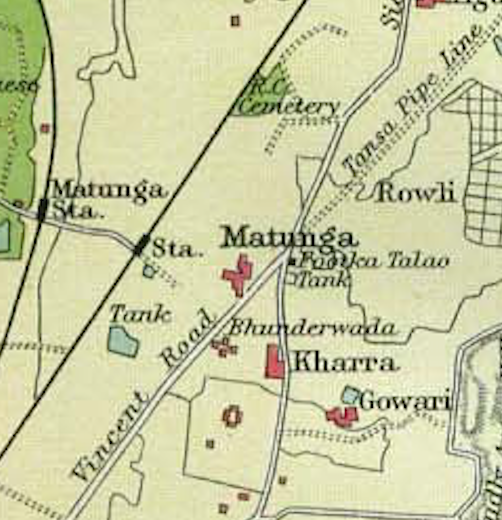
Early map of the Tansa pipeline drawn by British colonial mapmaker, JG Bartholomew. 1909. Courtesy: Harvard University archives.
Case No. 140 of 2006
The Bombay HC order in April was a response to a PIL that was filed in the year 2006 by an NGO called Janhit Manch, led by one Bhagwan Riyani. The petitioners raised the issue of “safety and security” of the Tansa pipeline – the chief water supply channel of Mumbai – and claimed that the slums situated along the pipeline posed a threat to its safety. This PIL came to be known among the slum residents as the notorious “140 of 2006”.
Two main concerns were raised in the PIL were: ‘Leakage and theft’, and ‘Safety and security of the pipeline against possible terror activities’ such as planned contamination of the water supply.
Leakage and Theft
According to the petitioners, the slum residents have been stealing water from the pipeline. Mumbai’s daily net water consumption is around 3760 million litres, of which the BMC claims that around 20-30%, that is around 950 million litres is lost to leakage and theft. Even if each of the 15,789 families living along the pipeline steals 1000 litres of water per day, the alleged theft would amount to less than 16 million litres. The petitioners remained silent about the remaining 934 million litres of leakage and theft. Moreover, in reply to an RTI filed by one of the evicted persons, the BMC clarified that they never received any complaints regarding water theft.
Safety and Security
The petitioners also claimed that the pipeline is susceptible to terrorist activities such as planned contamination of the water. The Tansa pipeline is the central source of drinking water for Mumbai and its contamination can in theory be catastrophic for tens of lakhs of people living in the city. The petitioners in 140 of 2006 demanded proper security along the pipeline to prevent efforts to tamper with it.
However, according to an RTI response obtained by the Mahul residents, the Tansa pipeline is 30 to 40 mm thick and the water pressure is 35 to 54 PSI.
“It is not possible therefore to puncture the pipe! Imagine the force with which water at such high pressures would gush out if anyone even does drill a hole into the pipeline. This is accepted even by the BMC in one of the RTI reponses. On the other hand, this water is coming from lakes that are open. So if one really wants to contaminate the water, it is much easier for him to poison the water in the lake itself rather than ‘inject poison’ into the pipeline,” said Mr. B. R. Verma, one of the residents whose house was demolished. The Tansa pipeline sources its water from Modak Sagar, Tansa lake, Tulsi lake, Vihar lake, Upper Vaitarna, Bhatsa and middle Vaitarna.
The PIL suggests that only those people who live within 10 meters of the pipeline, who use this water themselves, might contaminate these pipelines. This is despite there being no such recorded instance of attempted contamination since the pipelines were first laid more than a hundred years ago.
Are the ‘concerns’ real? Are the ‘solutions’ reasonable?
The evicted people who have been moved to rehabilitation tenements in Mahul have refuted the purported ‘threats’ to the pipeline, and stand opposed to the ‘solution’ proposed by the petitioners – that of evicting the residents along the pipeline. “Why can’t the government replace the current pipeline by an underground pipeline if they are so concerned about its safety? The Tansa pipeline is 150 years old and in any case needs serious reconstruction and repairs. The maintenance process has been halted since last 15 years. Why can’t they build new underground tunnels instead of displacing lakhs of people?” asked one of the evicted residents.
There are several clear benefits of tunnels over surface pipelines. “Tunnels are designed as earthquake resistant structures and have a life of 100 years, leading to minimum operation and maintenance cost,” according to the BMC itself. Tunnels begin 60 to 100 meters below the ground and are automatically shielded from losses due to thefts and leakages.
The BMC had allocated around Rs. 285 crores in 2016-17 for tunnel construction, repair and maintenance, out of a total yearly budget of Rs 37,500 crores. Over the years, several underground pipeline projects have also been announced, and in some cases construction has also begun. “MCGM (Municipal Corporation of Greater Mumbai, also known as BMC) is well aware about the correct solutions […] since a long time before 2006-2007… Many underground tunnels were in progress and few [were] proposed in [the] 2006-07 Budget of MCGM, and till today in 2017 many underground tunnel have been completed and many are in progress, but the reason for ill intention behind misguiding the High court & State Government and making target to Poor people of Slum in Mumbai, has become important at this point for detailed Investigation,” said a 2017 petition submitted to the court by residents of Mahul.
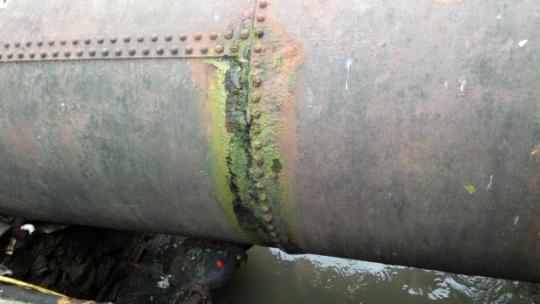
Maintenance of the pipeline has been stalled for decades now. Photo Courtesy: Jeevan Bachao Andolan, Mahul.
.
A 4-men ‘Expert Committee’ + 3 years of ‘survey’ + a 6-page ‘report’ = Demolition of 8000 homes
In response to the Janhit PIL, the Bombay HC formed an ‘expert committee’ that included Chief Secretary of Maharashtra, Director General of Police, Principal Secretary (Finance) and Municipal Commissioner (BMC), to study the issue and recommend how to evict and rehabilitate the families settled along the pipeline. “The directions are given in the context of the security of the country and also of Mumbai which has experienced some of the worst terrorists attacks in recent past,” said the court order.
After 3 years of survey and research, the committee submitted a 6-page report in July 2009. According to the survey, a total of 15,789 houses fell within 10 m of the pipeline on either side. The report went on to recommend that these houses be demolished and that a boundary wall be constructed on either side of the pipeline along its entire stretch. It also recommended that ‘intelligent watch towers’ be installed at frequent intervals along the pipeline.
However in response to an RTI filed by one of the affected persons, BMC had earlier said that “The tunnels are constructed approx. 60-65 m below ground level. Hence the question of demolishing structures above ground level does not arise”. This has prompted evicted families to raise the question: why demolish the “structures above the ground when the open part of the pipeline could have been replaced by an underground pipe?”
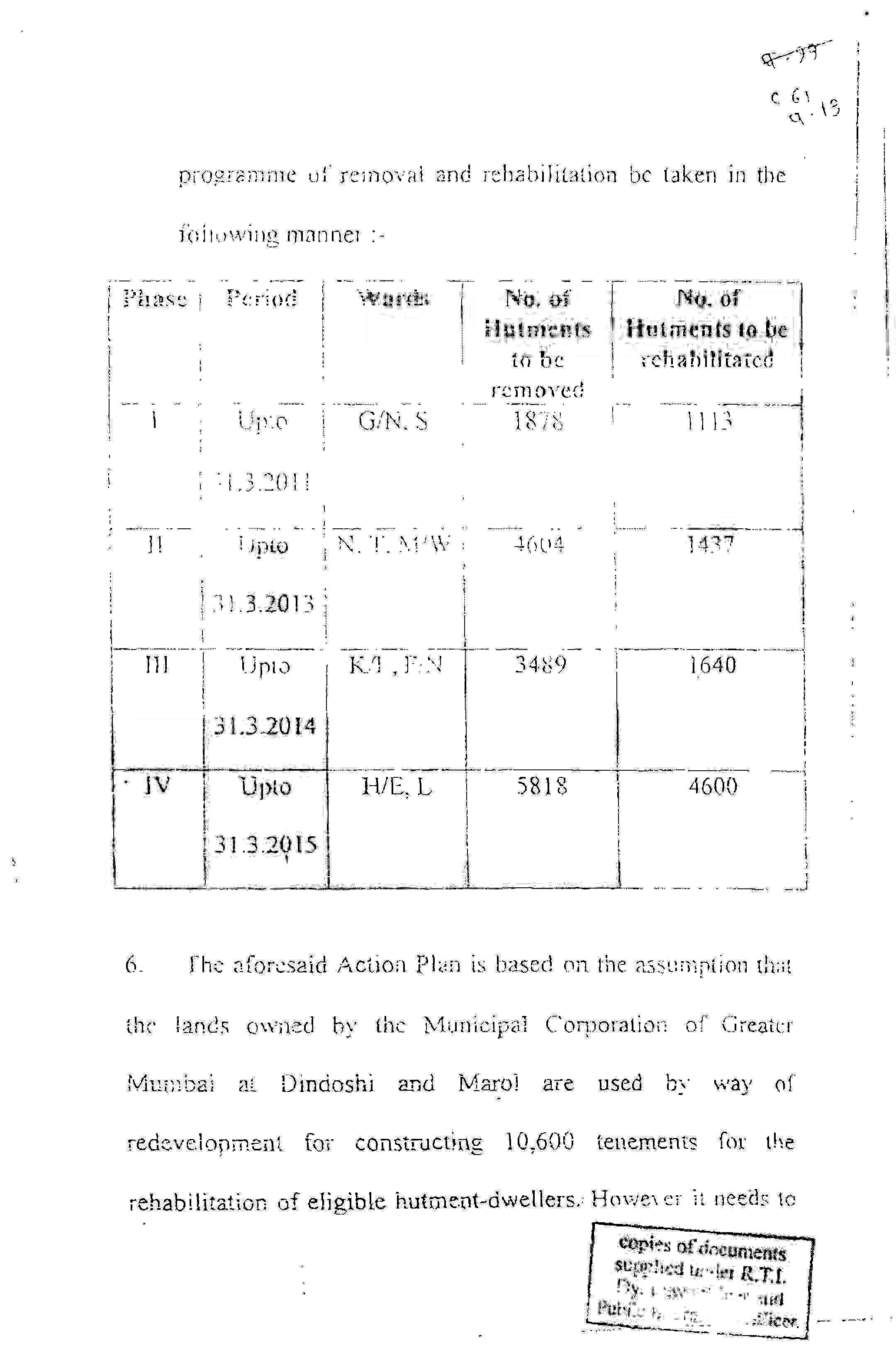
Initial Demolition Plan submitted by the ‘Expert Committee’. Courtesy: Jeevan Bachao Andolan, Mahul.
It is important to note that the same Expert Committee report had also mentioned that ‘eligible’ residents whose houses would be demolished, should be rehabilitated in the areas of Marol, Maroshi and Dindoshi. There was no mention of Mahul in this report.
The demolitions
The first demolition drive, in accordance with the 2009 report, took place in 2011 at Bhandup, sparking protests from the evicted families. Under pressure, the Government changed the cut-off date for eligibility for rehabilitation from 1995 to 2000. Thus, anyone who has been a resident in the evicted slums since 2000, would have to be rehabilitated.
A second major phase of demolitions happened in some areas in 2013-14, and eventually in 2017 in a third major drive, the BMC bulldozed 5000 houses. All in all, by 2017, around 8000 out of the estimated 15000 houses along the pipeline had been demolished.
People started protesting from their respective areas when the BMC announced the decision to rehabilitate those affected by the Tansa pipeline project to Mahul SRA since as early as 2013 – four years before the actual demolitions in bulk happened in 2017. Opposition parties also announced support for the protesting people. Most of the affected people were initially declared as ‘ineligible’ for rehabilitation by the Government.
The anti-eviction struggle and the role of BJP
In 2014, Satish Patole, a resident from Vidyavihar killed himself due to anxiety caused by the impending loss of shelter. People started a hunger strike in protest. The BJP candidate for the then-upcoming General Elections, Kirit Somayya, visited those participating in the hunger strike and promised that they would not be shifted to Mahul if the BJP came to power. “All of us decided to vote for the BJP after Kirit Somayya’s visit,” said one of the protesting residents. In December 2016, the BMC allotted houses to 400 families from Vidyavihar. The allotment letters given to these families mentioned that “as people are opposing their shifting to Mahul SRA, they have been allotted houses in Kurla HDIL(Housing Development and Infrastructure Limited)”.
During the 2016 BMC elections Prakash Mehta appealed to people from Vidyavihar to vote for the BJP candidate Parag Shah promising that they would be allotted houses in the Kurla HDIL. “The BJP government had displayed their willingness to solve our problem by allotting houses at Kurla HDIL to 400 families. So we trusted Prakash Mehta and again voted for BJP in the BMC elections too,” said one of the project affected. Shah won the elections handsomely, becoming the richest ever Ward member in the city, with declared assets of Rs 690 crores. Shah is a big real estate developer, and runs a construction company called Man Infraconstruction which has built numerous expensive highrises in the Ghatkopar-Vikhroli-Sion-Chembur areas.
Within two months of the BMC elections, the people affected by the Tansa pipeline project started getting notices to vacate their houses and shift to Mahul. In April 2017, the BMC staff who had come for demolitions had to return due to protests. Soon after, they demolished 70 houses in Kama galli. The people of Kama galli started living on footpath instead of shifting to Mahul.
Forced to Mahul
On 13 May 2017, the BMC started demolishing houses along the pipeline and people were forced to shift to Mahul SRA. Up until one month after the demolition, people protested their evictions by occupying the footpath, but with the start of monsoons they were not left with any other option but to shift to Mahul.
By November 2017, the people shifted to Mahul from various areas along the pipeline had organised themselves under the Mahul Prakalp Grast Sangharsh Samiti, to fight for a just rehabilitation. They filed a writ petition on March 2018 demanding the same, saying that Mahul is a critically polluted and uninhabitable region.
On 8 August 2018, in an interim order, the Bombay HC ordered the Government of Maharashtra to either relocate the Tansa Pipeline affected persons to an inhabitable place or compensate them enough so as to enable them to rent a house in Mumbai. Seeing that the government was not taking any action to implement the court’s order, the people rehabilitated in Mahul initiated the ‘Jeevan Bachao Andolan,’ on 28 October 2018, and occupied a footpath in Vidyavihar in protest. 200 days after the occupation began, the dharna tent in Vidyavihar is still up.
Corruption Allegations around the Construction of Mahul SRA
In 2009, after the Bombay HC directed the government to demolish the settlements along the Tansa pipeline, only 7,500 families (out of more than 15,000) had been listed as eligible for rehabilitation. The Urban Development Department asked the Slum Rehabilitation Authority (SRA) to analyze and process the proposals for “Slum Rehabilitation Schemes” submitted by private developers for providing tenements to these 7,500 project affected families.
However, not only has the SRA’s rehabilitation of thousands of people to the dangerously polluted Mahul put these lives in danger, it has also rewarded the private developers with handsome profits. “The SRA sanctioned a slum rehabilitation scheme on a private land owned by a developer in village Mahul [sic] for construction of 8,582 PAP tenements,” noted the CAG last year. The land belonged to Mafatlal Fine Spinning and Manufacturing Ltd. located in Mahul.
Even in its 2017 report, the CAG had pointed out that the rules for three SRA projects, including Mahul, were bent to favour the private builder Dynamix Realty (a joint venture between DB Realty and Eversmile Construction Co. Ltd.), who were awarded the contract in 2011. The report stated that the sanctioning of the Mahul project illegally benefited the builder by over Rs. 158 crores. Ironically, the Bhabha Atomic Research Centre which has its operations in these parts, had objected to settling people in the Mahul area, citing the same bogey of “potential threat to national security” – the bogey that was used to evict the Tansa pipeline residents to begin with. The CAG report further says that the SRA had allowed the rehabilitation scheme on private land at Mahul village, despite such objections by the BARC.
In the second part, we look at the broader picture of Mumbai’s housing crisis and real estate economy, in an attempt to understand the significance of the struggle of the Tansa evictees.
Feature image: Mahul SRA with the Petrochemical industries in the background. Source: GX.

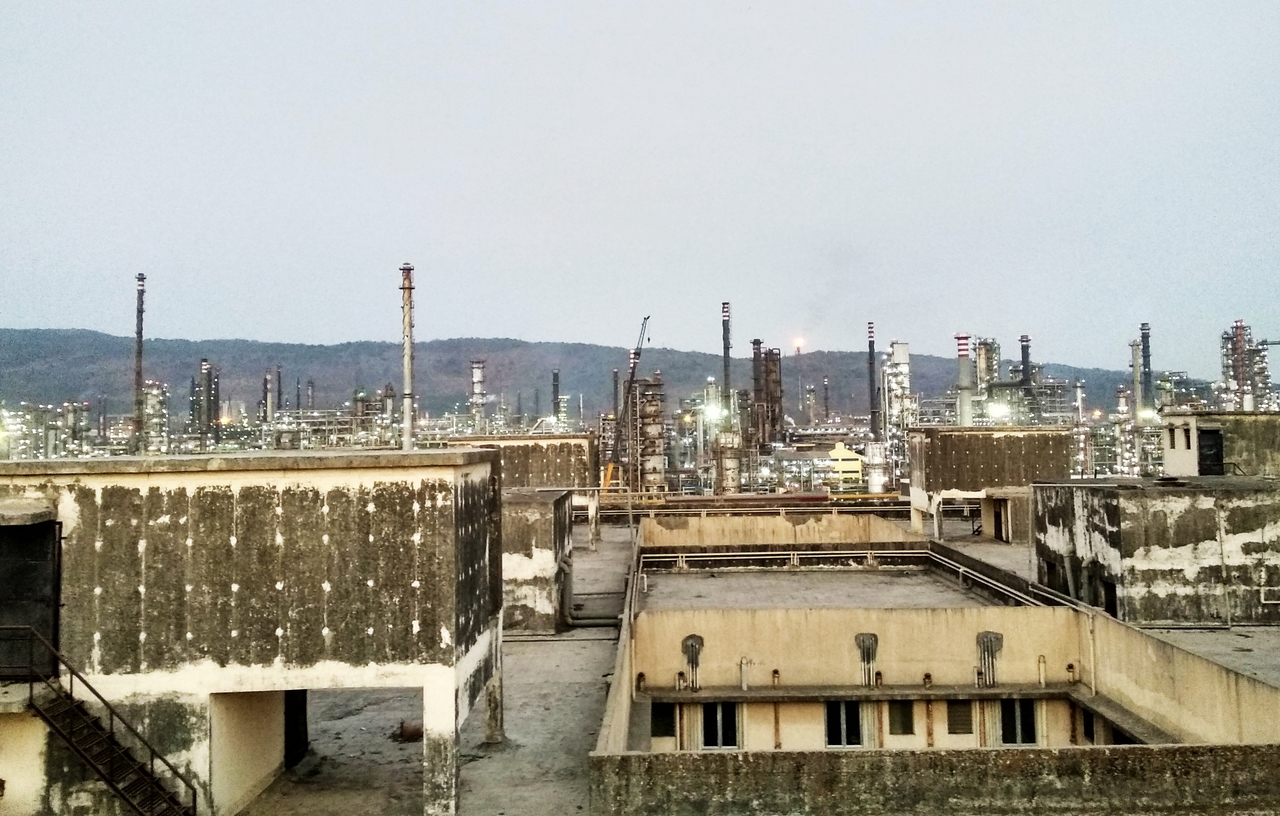
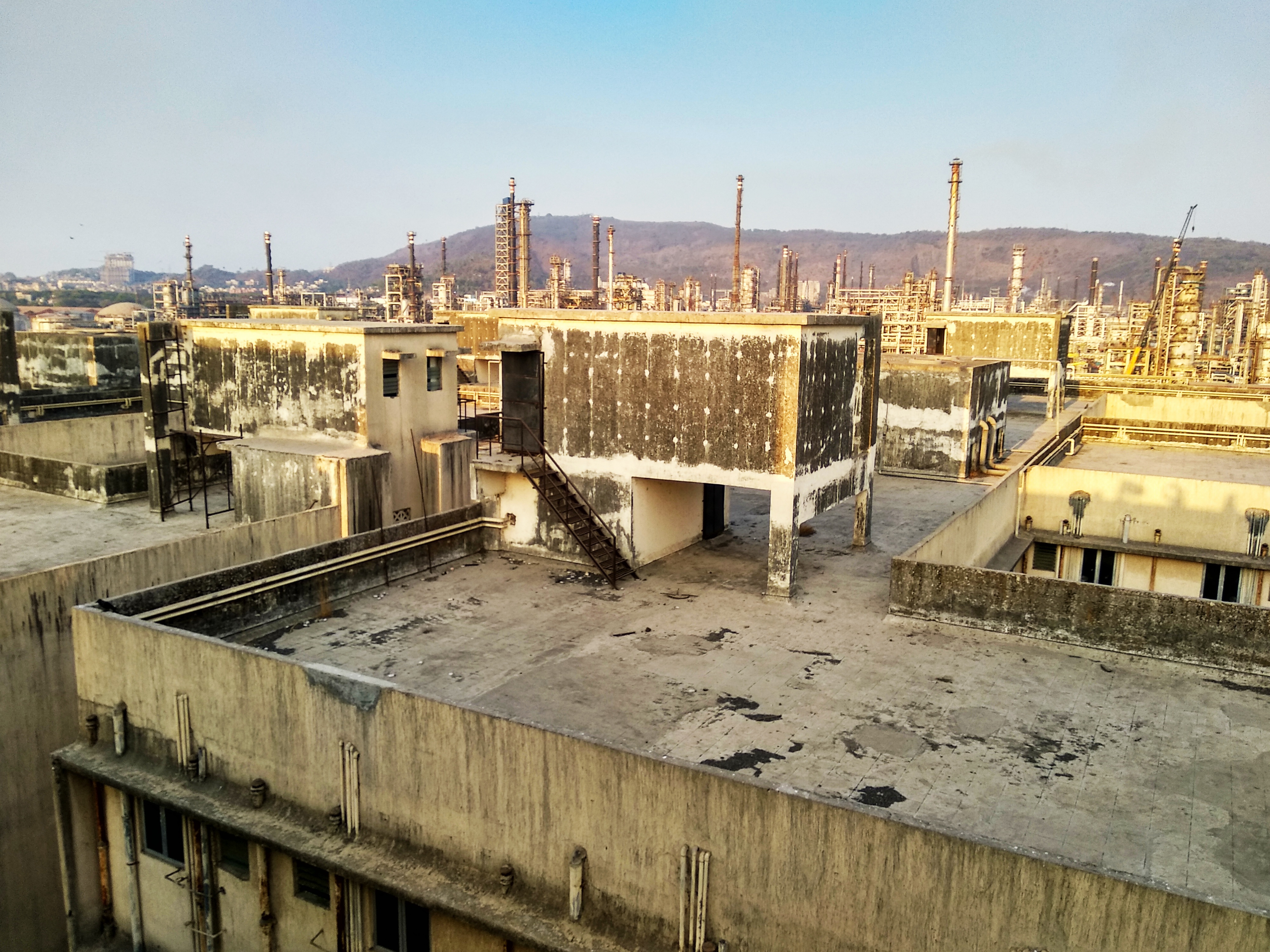
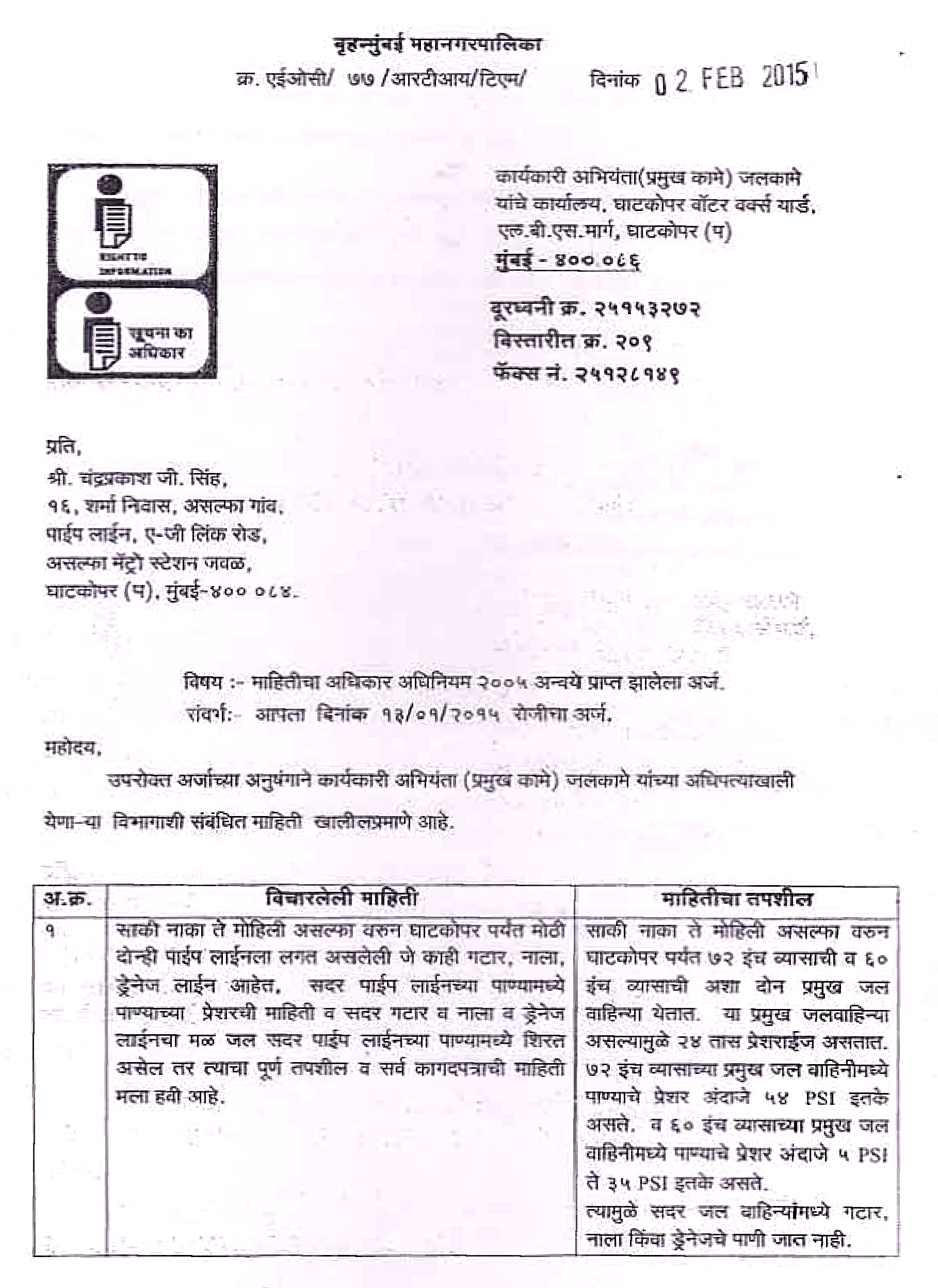
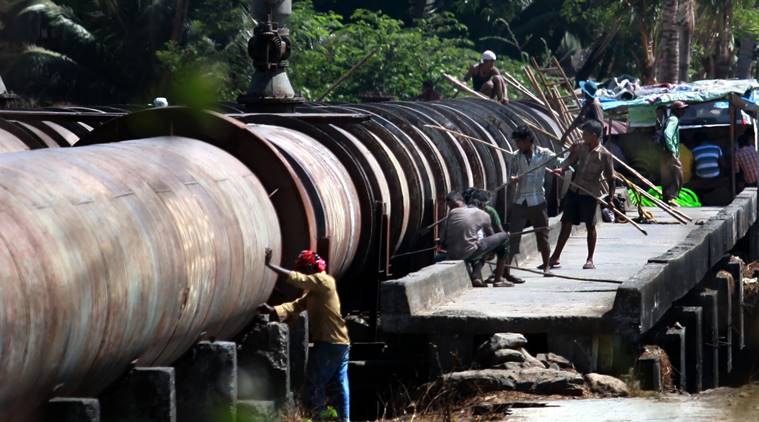
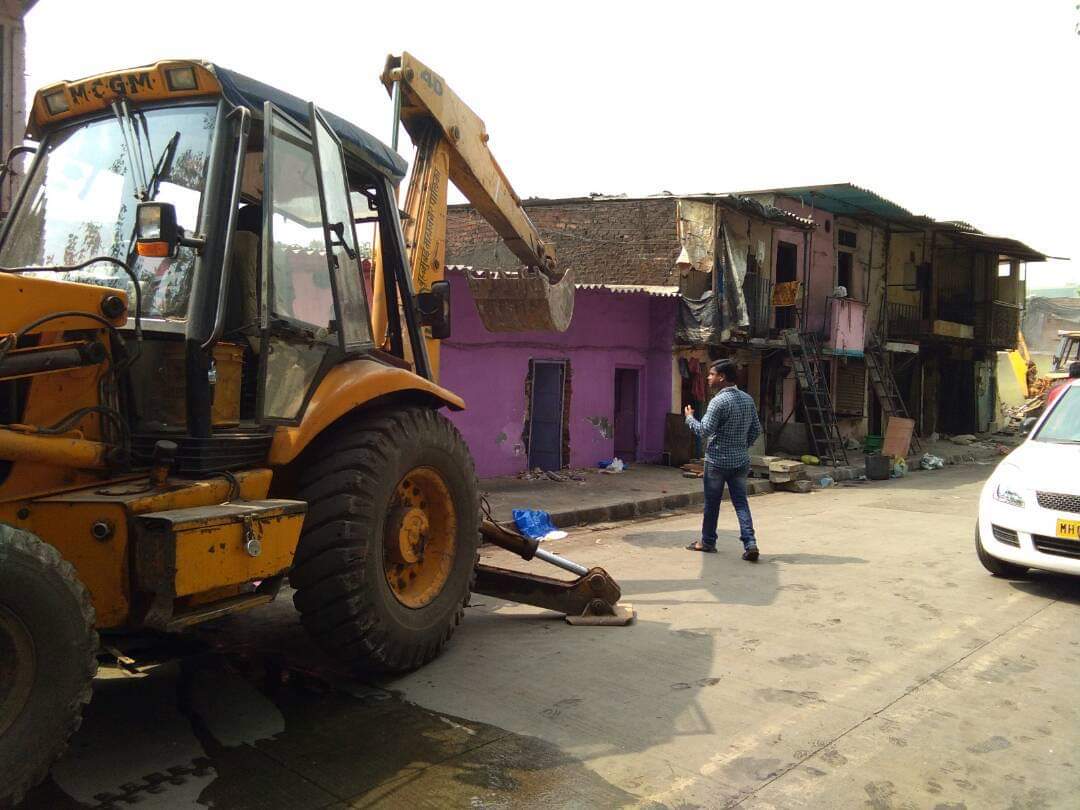
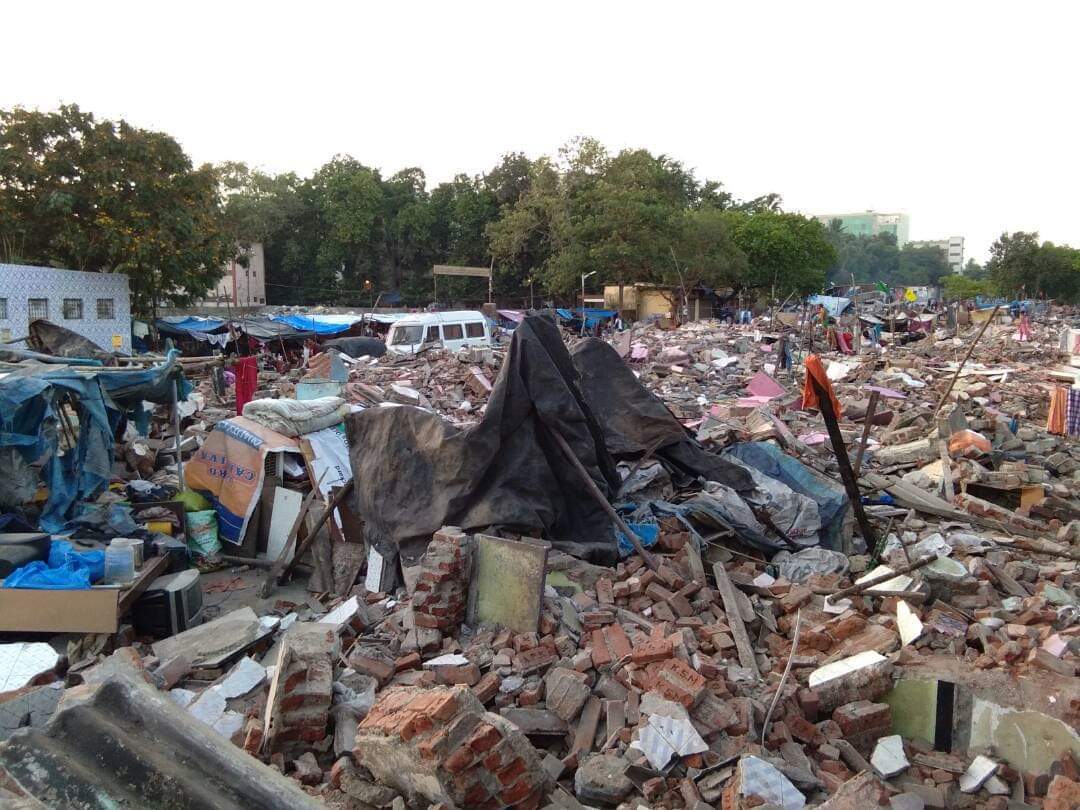
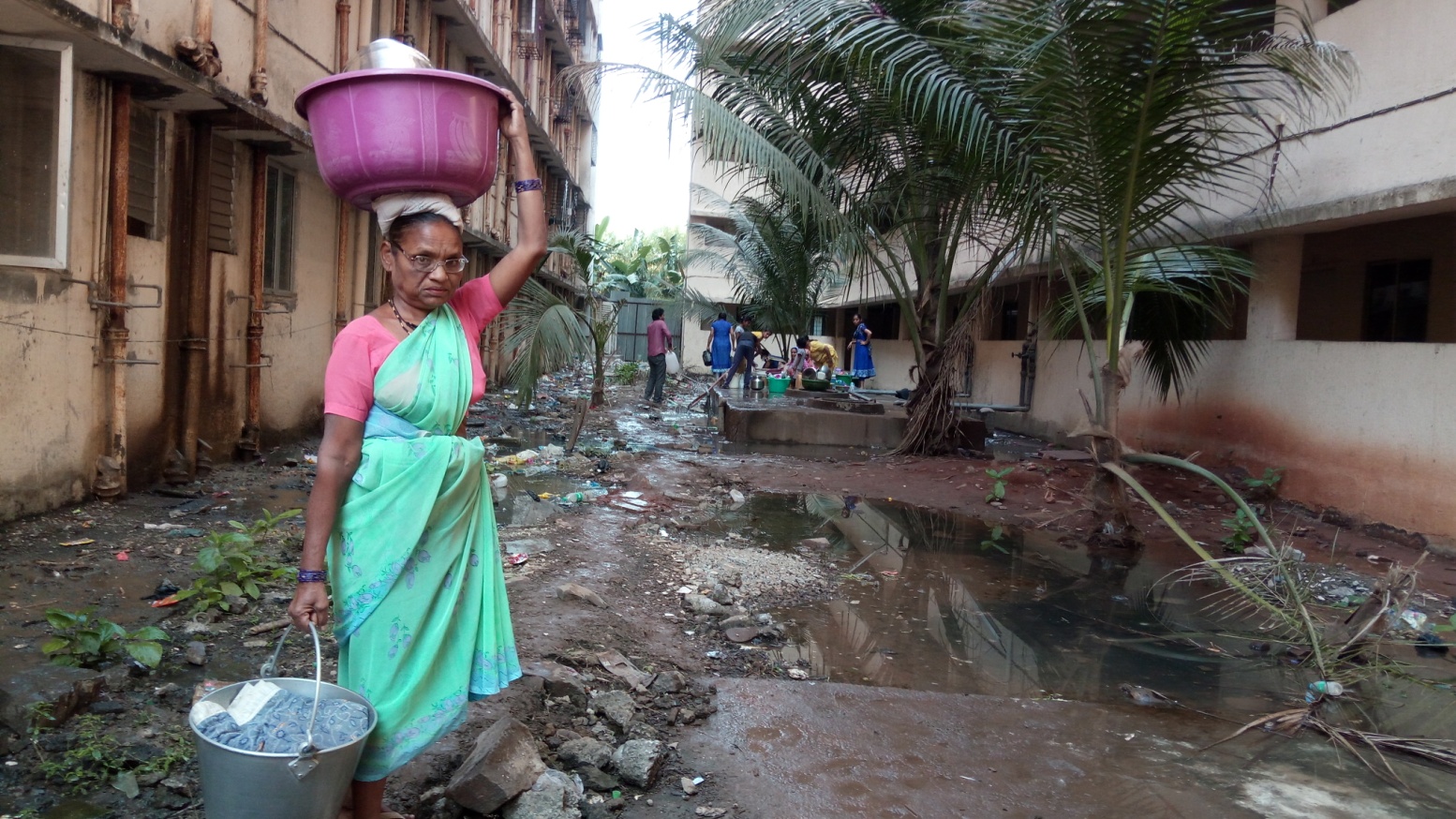
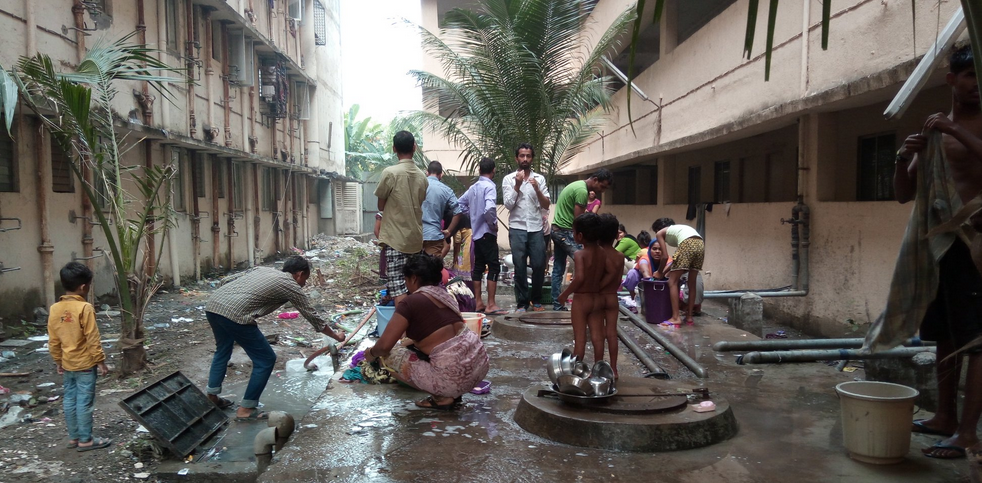
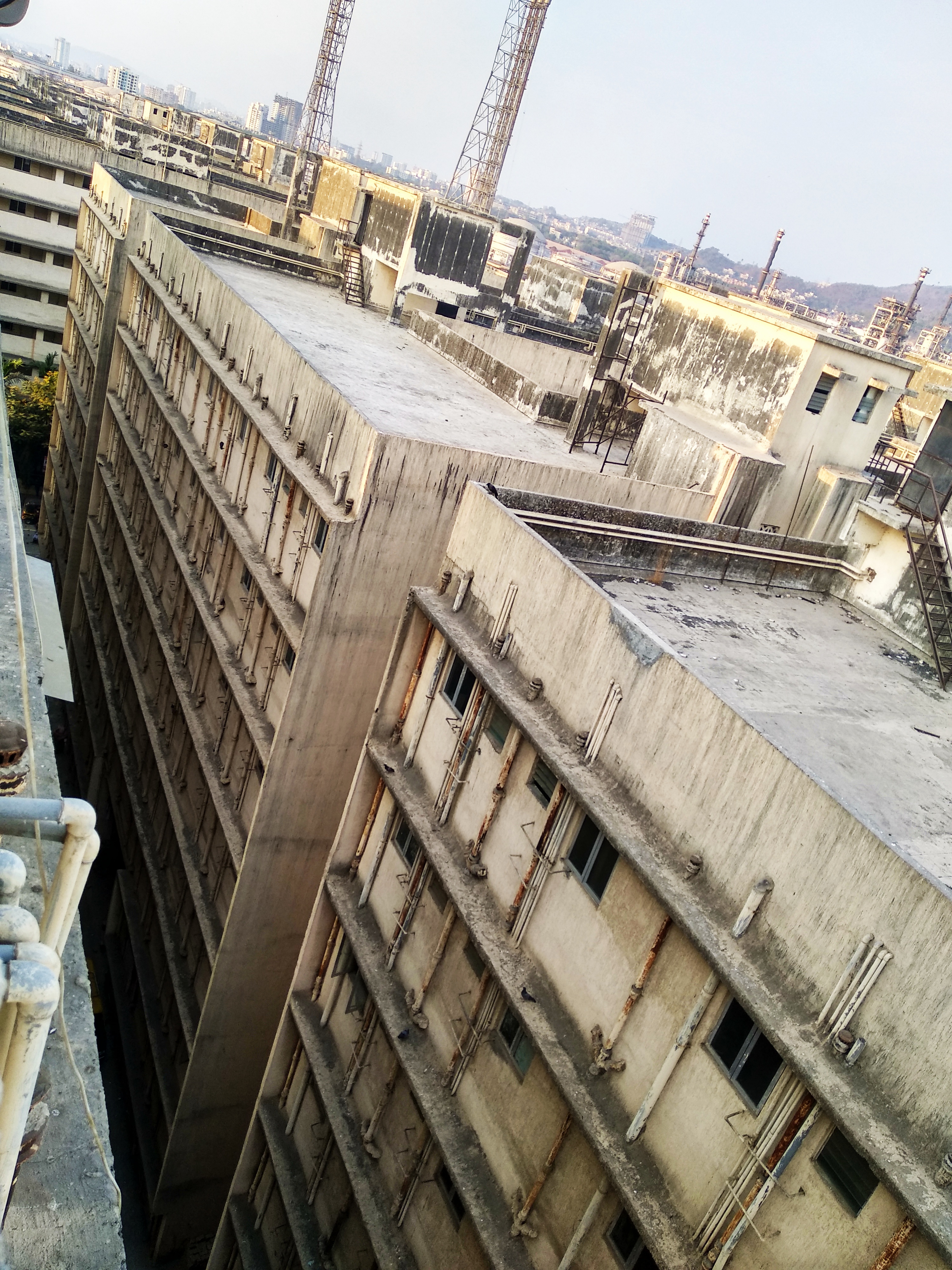

nice post greate information thank you so much
open plots
dtcp rera open plots
open plots
dtcp Rera open plots
dtcp Rera open plots
dtcp Rera open plots
HMDA open plots
dtcp Rera open plots
2bhk 3bhk flats
villas